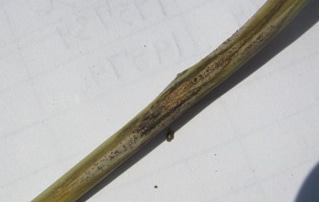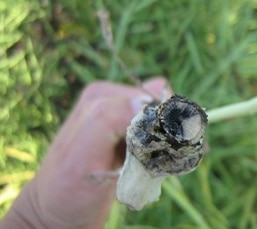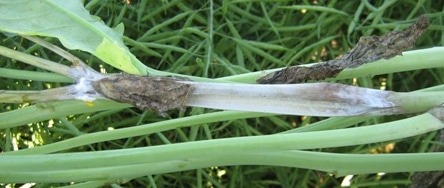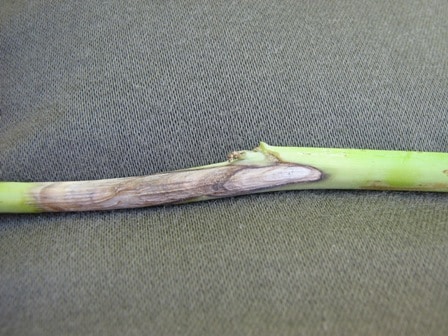Growers seeing stem lesions or pre-mature ripening should take a closer to identify the cause. There is a good chance it’s sclerotinia. But it could be blackleg. (Or clubroot, as noted in the previous article.)
It’s important to identify the cause because it will help in management for next year. Proper fungicide selection, variety selection, crop rotation intervals and weather response are different depending whether the problem is sclerotinia or blackleg. Here’s how to tell the difference:
Blackleg: Symptoms showing up in Manitoba at this stage of the season are greyish lesions on the stem with the black picnidia spots, and also basal lesions — which are the most serious. Basal lesions can’t really be properly identified until you cut through the base of the stem and look for greyish infection. This infection will eventually grow through the stem, cutting off nutrient flow. If you see plants drying up, cut a few open to check.
Sclerotinia: Look for fuzzy rot on the lower branches. The plant may look healthy at the base, but there will be dead branches. Infected branches will have white-grey tissue (not green) and will often start to shred apart.




